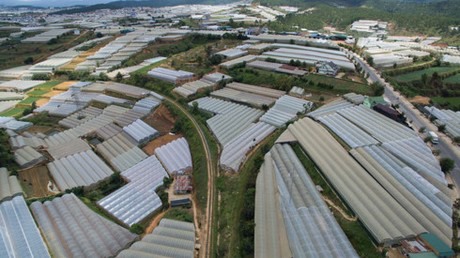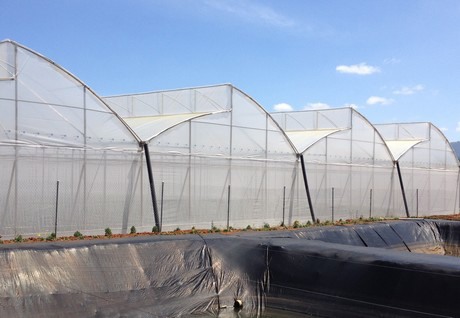An aerial photo of the Vietnamese province of Lam Dong might remind you of Almeria, Spain - also known as the vegetable garden of Europe. As far as the Vietnamese are concerned, the country will fulfill the same function and become the vegetable growing heart of Southeast Asia. Numerous greenhouses can already be found there, and the Vietnamese government has the ambition to become an even bigger player in the agricultural and horticultural sector. According to Willem Schoustra, Dutch agriculture council for Vietnam and Thailand, support from horticultural suppliers is welcome: various challenges including the Vietnamese climate require new production methods. Next week, at the second edition of the HortEx Vietnam, various horticultural suppliers are to show what they can offer the sector.

Read more about the HortEx show here.
Exact figures are not available, but according to estimates, about 4,000 or 5,000 hectares of vegetables are grown in the Vietnamese province of Lam Dong, around Da Lat. It is Vietnam's most important horticulture region and, according to various reports, the country is ranked fifth among fruit and vegetable producing countries in Asia. Among others, the country exports its produce to China, Japan and Singapore, as well as Europe and the US, and they are willing to expand these activities. "Vietnam has the ambition to become a regional and global player in agriculture and horticulture," says Willem Schoustra.
Food safety
Food safety naturally comes into play with those growing exports. Willem: "Because this is so important for export, there is more and more attention for food-safe cultivation, but also within the national borders consumers from the growing middle class are asking for products with fewer crop protection products. Many Vietnamese buy their fruit and vegetables on the local markets, the so-called wet markets. A hybrid system is created, because the retail also develops simultaneously. They put import food on the shelves. Veal, white meat, cheese and natural fruit. On the shelves are grapes and kiwis and apples, including from the Netherlands."
Challenges for new production methods
In view of this changing market, there are many opportunities for suppliers to the fruit and vegetable sector. "It's about the post-harvest angle, think of refrigeration and logistics," says Willem. "To get the product to the consumer in good condition from the grower is a big challenge. And challenges can also be found in the cultivation itself. The potential is huge: you see the developments and you see it going better, but the challenges remain, realizing higher quality products and a higher yield with the use of fewer resources: less water, fewer crop protection products."
More crop per drop, Willem summarizes, and that offers opportunities for various suppliers. "Many technical companies already do business here and the breeders are well represented. Bejo, Rijk Zwaan, East West, Enza Zaden, all of them are represented in Vietnam. "

Sawtooth greenhouse in Vietnam
Flowers
While the covered cultivation of vegetables develops, the flower growers follow closely. Willem: "As the consumer has more to spend, the flower industry is growing. Although considerably smaller than Aalsmeer, Hanoi has a lively flower trade, exporting to, among others, Korea."
One of the best-known horticultural regions in Vietnam is Da Lat. A lively sector also arises in Man Chao. In terms of regions, Willem sees many opportunities for the Mekong Delta, a fertile area that has to deal with problems caused by climate change. The water level rises and the ground subsides, resulting in salinization and flooding. Willem: "The region has a lot of potential - but just putting down greenhouses is not the solution. Investments must be made in new production methods that can withstand the problems of this region. Agriculture and horticulture must be adapted to this: the new production methods must be adapted to the changing circumstances."
HortEx
During the second horticultural fair HortEx, which will take place from 13 to 15 March, technology will play an important role. Willem: "High-tech farming is high on the agenda. Nevertheless, we have to make sure that the technology that is imported is not only super high-tech, but can work especially in these climatic conditions. "Willem calls the fair very valuable for Vietnamese horticulture. "We can share knowledge and show which companies are on the market. Especially for Dutch suppliers and technology companies it is an excellent opportunity to show themselves. At the fair they meet Vietnamese who are enterprising and money-driven, qualities that stimulate business."
Read more about the HortEx show here.
For more information:
HortEx Vietnam
www.hortex-vietnam.com
